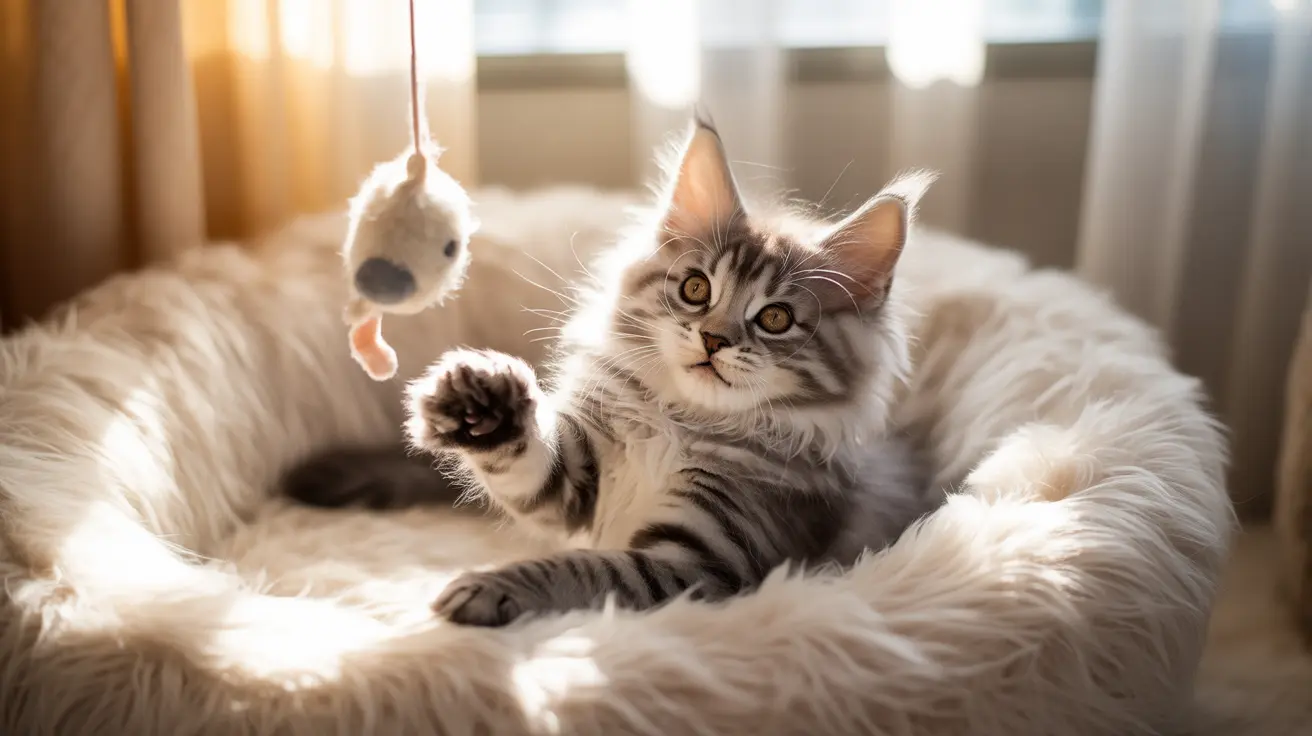Understanding Gingival Hyperplasia in Cats
Gingival hyperplasia in cats is a concerning dental condition characterized by abnormal overgrowth of the gum tissue. This condition can affect cats of any age but is particularly common in young felines during their tooth eruption phase. The excessive gum tissue growth can lead to various oral health complications and affect your cat's quality of life if left untreated.
While not immediately life-threatening, this condition requires prompt attention as it can create perfect hiding spots for bacteria and food particles, potentially leading to more severe dental issues over time. Understanding the causes, symptoms, and treatment options is crucial for any cat owner facing this challenge.
Common Causes and Risk Factors
Several factors can contribute to the development of gingival hyperplasia in cats:
Genetic Predisposition
Certain cat breeds show a higher susceptibility to this condition, particularly Maine Coons, Siamese, Abyssinians, and Somalis. If you own one of these breeds, regular dental check-ups are especially important.
Age-Related Factors
Young cats around 7-10 months of age are particularly susceptible, often coinciding with the eruption of permanent teeth. This juvenile form of gingival hyperplasia requires special attention and monitoring.
Medical Conditions
Underlying health issues, including immune system disorders and viral infections like FeLV or FIV, can contribute to gum tissue overgrowth. Additionally, certain medications, particularly cyclosporine, may trigger this condition in some cats.
Recognizing the Signs and Symptoms
Early detection is key to managing gingival hyperplasia effectively. Watch for these common signs:
- Visible thickening or enlargement of the gums
- Gums that appear to be growing over the teeth
- Bleeding during eating or grooming
- Bad breath (halitosis)
- Difficulty eating or decreased appetite
- Drooling more than usual
- Pawing at the mouth
Diagnosis and Treatment Options
Professional Diagnosis
Your veterinarian will perform a thorough oral examination, often requiring anesthesia for a detailed assessment. Dental X-rays may be necessary to evaluate the extent of the condition and rule out other dental problems.
Treatment Approaches
Treatment typically involves multiple steps:
- Professional dental cleaning to remove plaque and calculus
- Surgical removal of excess gum tissue (gingivectomy) in severe cases
- Treatment of any underlying conditions
- Implementation of a comprehensive home dental care routine
Prevention and Long-term Management
Preventing gingival hyperplasia or managing it long-term requires a dedicated approach:
- Regular professional dental cleanings
- Daily tooth brushing with cat-specific toothpaste
- Use of dental-friendly foods and treats
- Regular oral examinations at home
- Prompt attention to any changes in your cat's mouth or eating habits
Frequently Asked Questions
What causes gingival hyperplasia in cats and which breeds are most at risk?
Gingival hyperplasia in cats can be caused by genetic factors, immune system responses, or certain medications. Maine Coon, Siamese, Abyssinian, and Somali cats are most at risk, particularly during their juvenile years.
How can I tell if my cat has gingival hyperplasia versus regular gingivitis?
Gingival hyperplasia shows as actual tissue overgrowth that may cover parts of the teeth, while gingivitis primarily presents as red, swollen gums without tissue overgrowth. A veterinary examination is necessary for proper diagnosis.
What are the treatment options for gingival hyperplasia in cats?
Treatment options include professional dental cleaning, surgical removal of excess tissue, addressing underlying causes, and maintaining good oral hygiene. The specific treatment plan depends on the severity and cause of the condition.
How can I help prevent gingival hyperplasia from developing in my cat?
Prevention involves regular dental check-ups, daily tooth brushing, using dental-specific diets and treats, and monitoring your cat's oral health, especially in breeds known to be at higher risk.
Is gingival hyperplasia in cats painful, and what symptoms should I watch for?
While not always painful, gingival hyperplasia can cause discomfort, especially when eating. Watch for signs like difficulty eating, bleeding gums, bad breath, drooling, and pawing at the mouth.
Conclusion
Gingival hyperplasia in cats is a manageable condition when caught early and treated appropriately. Regular veterinary check-ups, good oral hygiene, and prompt attention to any changes in your cat's mouth are essential for preventing and managing this condition. With proper care and attention, most cats with gingival hyperplasia can maintain good oral health and quality of life.






